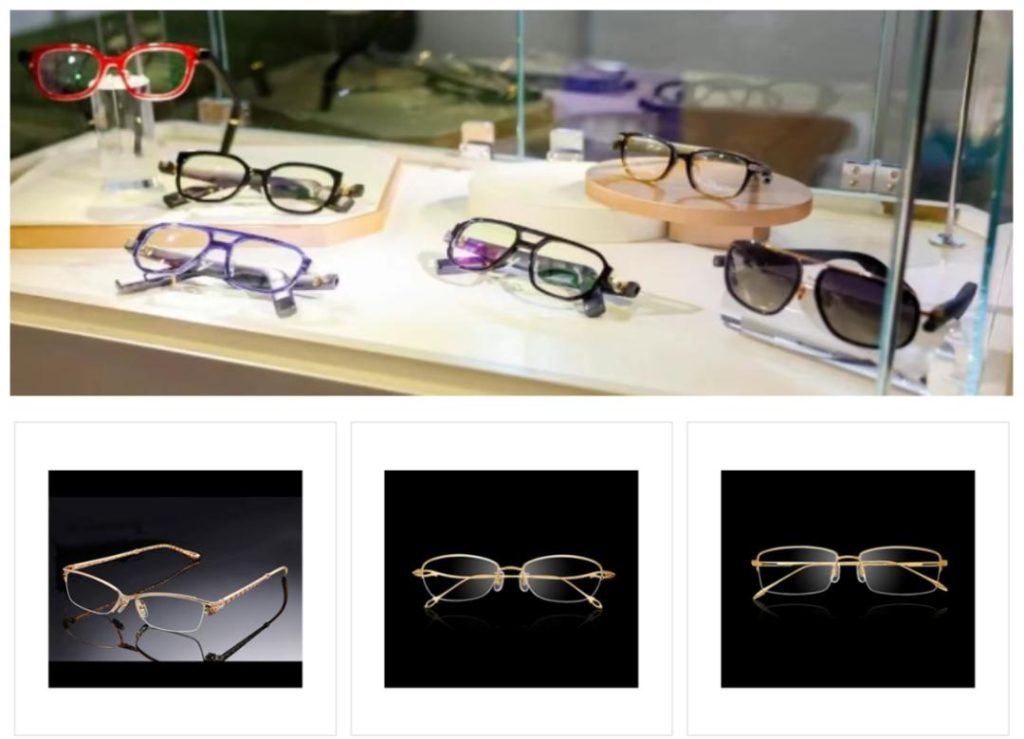
Positive Comments: A Cross – border Attempt Aimed at the Silver – haired Economy and Exploration of New Growth for a Century – old Brand
Laofengxiang, a time – honored gold and jewelry brand with a history of over 180 years, has launched AI glasses in a cross – border move. Although it has sparked a lot of controversy, the strategic logic behind it still holds positive significance worthy of recognition.
Firstly, it precisely targets the “silver – haired economy” track, hitting the real needs of an aging society. According to news data, the current population of those over 60 in China has reached 310 million, and the aging trend is irreversible. The demand of the elderly group for technology products is changing from “optional” to “a must – have”. The functions of Laofengxiang’s AI glasses, such as real – time voice navigation, intelligent assisted reading, and emotional dialogue, exactly address the pain points of the elderly in daily travel, reading difficulties, and the need for emotional companionship. For example, intelligent assisted reading can help the elderly with presbyopia or declining vision quickly identify drug labels and menu text; real – time voice navigation can prevent the elderly from being distracted by operating complex mobile phone navigation. This “function subtraction” strategy, which focuses on the most practical functions needed by the elderly rather than piling up technological gimmicks, meets the core needs of the elderly group for “convenience, simplicity, and reliability”. As shown by the expectations of an over – 80 – year – old man for the hearing aid function in the news, the demand of elderly users for products is more straightforward. If Laofengxiang can further adapt its function design to the usage scenarios of this group (such as large volume, anti – fall design, and simplified operation), it is expected to open up a differentiated niche market in the AI glasses market.
Secondly, the trust endorsement of the century – old brand provides a natural advantage for the cross – border move. As an enterprise on the “Top 500 Chinese Brands in Terms of Value” list, Laofengxiang’s brand image of “reliability and solidness” can exactly alleviate the trust concerns of the elderly group towards emerging technology products. Compared with the AI glasses of Internet giants, elderly users may be more inclined to choose the well – known time – honored brand they are familiar with. For example, the news mentioned that the basic version of Laofengxiang’s AI glasses is priced at 1,200 – 1,500 yuan, and the gold – inlaid version is close to 2,000 yuan, similar to the prices of mainstream products. However, the “quality perception” accumulated by Laofengxiang’s jewelry business may make elderly users more willing to pay for its technology products. In addition, Laofengxiang has an extensive offline store network (over 4,900 outlets nationwide). If it can include AI glasses in store displays and sales and promote them through the long – established trust relationship between shop assistants and elderly customers, it is expected to reduce customer acquisition costs.
Finally, the high – growth potential of the intelligent hardware track provides room for imagination for Laofengxiang’s “second growth curve”. According to IDC data, in the first quarter of 2025, the shipment volume of China’s intelligent glasses market increased by 116.1% year – on – year, with audio and shooting glasses growing by 197.4% and AR/VR glasses growing by 25.2%. The market is on the verge of an explosion. If Laofengxiang can seize this window period and achieve brand rejuvenation and technological transformation through AI glasses, it can not only relieve the pressure on its main business (both revenue and net profit declined in 2024 and the first quarter of 2025), but also inject new growth momentum into the enterprise.
Negative Comments: Hollow Technology and Doubtful Motives, Multiple Risks Hidden in the Cross – border Path
Although Laofengxiang’s cross – border logic is reasonable, its shortcomings in technology reserves, product strength verification, and strategic motives also make this attempt full of uncertainties.
Firstly, it lacks core technological competitiveness, and the model of “buying all software and hardware” cannot support long – term competition. The news clearly stated that Laofengxiang provides the frames of its AI glasses, while the rest of the software and hardware rely on external procurement: the AI technology is based on ByteDance’s publicly available Doubao large – model (ByteDance has denied in – depth cooperation), and the hardware integration may be outsourced. This “assembly – style” R & D model has obvious hidden dangers in the intelligent hardware field. The core difficulty of AI glasses lies in the balance of “performance – battery life – wearing experience”. High – performance computing requires greater computing power, resulting in increased power consumption, and the weight of the battery will affect wearing comfort. Currently, mainstream manufacturers (such as XREAL and Thunderbird Innovation) are investing heavily in R & D in areas such as optical modules, chip optimization, and system algorithms to solve this contradiction. If Laofengxiang only acts as an “integrator”, without self – developed optical or chip technology and without in – depth participation in the adaptation and development of the large – model (the Doubao large – model is a general product), its products may be difficult to compete with technology – based manufacturers in actual experience (such as response speed and accuracy). For example, elderly users have high requirements for the real – time nature of voice navigation and the accuracy of translation. If Laofengxiang’s AI glasses experience glitches or errors in functions due to insufficient technology integration, it may even consume brand trust.
Secondly, the product strength has not been verified, and there are too many marketing traces of “concept first”. As of the news release, Laofengxiang has only displayed the AI glasses at exhibitions, without announcing specific parameters (such as weight, battery life, and optical display effect), and the suppliers of core components have not been disclosed. This “vague” information release is in sharp contrast to the product release logic of “transparent parameters” of mainstream technology companies. For example, XREAL Air 2 Pro clearly marks key indicators such as weight (72g), battery life (4 hours), and field of view (58°), while Laofengxiang’s promotion only stays at the level of function description. In addition, the news mentioned that Laofengxiang’s customer service said the information about the AI glasses was “to be determined”, which indirectly reflects that its product development may still be in the early stage, raising suspicions of “telling stories for the capital market”. After all, the stock price hit the daily limit on the day the news was announced, and although it subsequently declined, the short – term market value boost effect was obvious. This “concept – driven” rather than “product – driven” strategy may lead to a double trust crisis among investors and consumers if the final product fails to meet expectations.
Finally, the “cross – border inertia” under the pressure of the main business may lead to resource dispersion due to insufficient synergy. In recent years, to cope with the decline in performance, Laofengxiang has attempted multiple cross – border moves: co – branding with Mihoyo and NetEase, opening a Tmall flagship store, and sponsoring sports events. This cross – border move into AI glasses is essentially a continuation of its “traffic anxiety”, trying to attract the attention of young users and capital through hot concepts. However, the user needs, channel logic, and technological thresholds of jewelry and AI glasses are very different. Jewelry consumption is a low – frequency, high – unit – price “emotional consumption”, while AI glasses are a high – frequency, medium – to – low – unit – price “functional consumption”. Laofengxiang’s offline stores mainly focus on jewelry sales, and the shop assistants lack experience in selling intelligent hardware (such as explaining technical parameters and solving user problems). Moreover, the AI glasses market requires continuous R & D investment (such as algorithm iteration and hardware upgrade), but Laofengxiang’s R & D expenses in the first quarter of 2025 decreased by 40.28% year – on – year, which is contrary to the “high – R & D – driven” model of technology companies. This “cross – border for the sake of cross – border” strategy may lead to resource dispersion, making it unable to gain a foothold in the AI glasses market and affecting the brand focus of its main business.
Suggestions for Entrepreneurs: Cross – border Requires “Hardcore” and Product Strength is the Key
Laofengxiang’s cross – border attempt provides multi – dimensional inspiration for entrepreneurs, especially in the fields of traditional enterprise transformation and cross – border innovation:
- Precisely locate niche needs and avoid the “pseudo – pain – point” trap: Laofengxiang’s idea of targeting the elderly group is worth learning from, but it needs to conduct in – depth research on the real needs of the target users. For example, the core needs of elderly users for AI glasses may include “lightweight and easy to wear”, “extremely simple operation”, and “long battery life” rather than piling up functions. Entrepreneurs should verify the authenticity and rigidity of the needs through user interviews, scenario simulations, etc. before making a cross – border move, avoiding the misunderstanding of “thinking users need something when they don’t”.
- Build a technological moat and reject “assembly – style innovation”: The competition in the intelligent hardware field is essentially a technological competition. Laofengxiang’s model of “buying all software and hardware” is difficult to form a barrier. If entrepreneurs enter the technology track, they need to establish independent R & D capabilities in core technologies (such as algorithms and hardware modules) or bind technology suppliers through in – depth cooperation (such as jointly developing customized functions with large – model manufacturers) instead of just being an “integrator”.
- Take product strength as the core and avoid “concept first”: Laofengxiang’s case shows that brand endorsement and concept marketing alone cannot support long – term market recognition. Entrepreneurs should first complete the “minimum viable verification” of the product (such as testing battery life, weight, and function accuracy), and then launch the product into the market on the basis of transparent parameters and reliable experience. At the same time, they need to establish a user feedback mechanism to quickly iterate and optimize the product.
- Evaluate cross – border synergy and avoid resource dispersion: Cross – border innovation needs to consider the resource synergy with the main business. For example, Laofengxiang’s offline stores can serve as experience points for AI glasses, but the shop assistants need to be trained to master the sales skills of intelligent hardware; the “quality perception” accumulated by its jewelry business can be transferred to technology products, but technological investment is needed to strengthen the brand perception of “technology + quality”. Entrepreneurs should give priority to choosing tracks with synergistic effects with the resources (channels, users, brands) of their main business, avoiding blindly following hot trends.
In conclusion, Laofengxiang’s cross – border move into AI glasses is a positive attempt by a traditional enterprise to cope with growth pressure. Its insight into the silver – haired economy and brand advantages are worthy of recognition, but problems such as hollow technology and unverified product strength also ring the alarm bells for entrepreneurs. In the trend of the integration of technology and traditional industries, only by taking user needs as the core, technology as the support, and product strength as the foundation can one walk more steadily and further in cross – border innovation.





